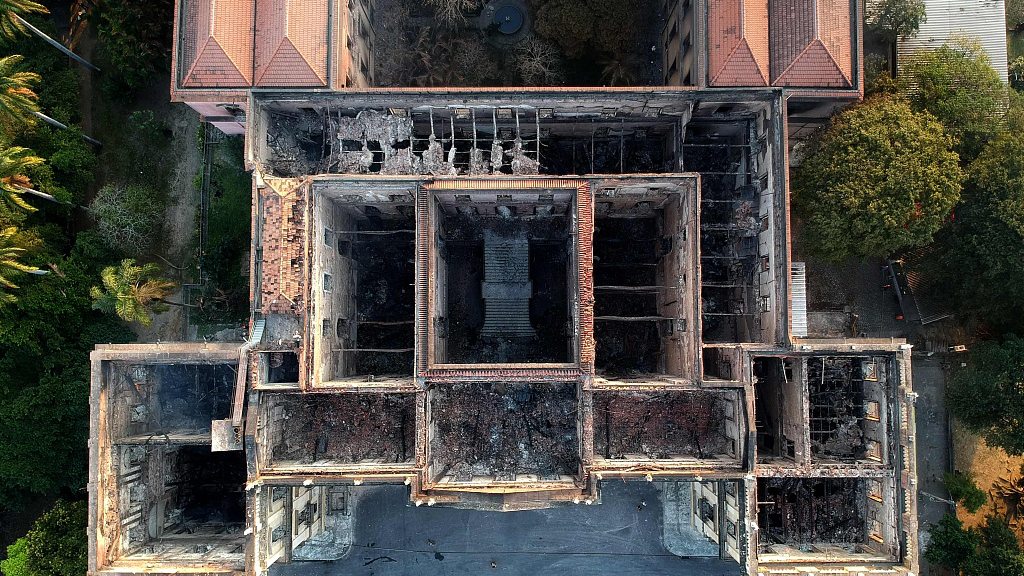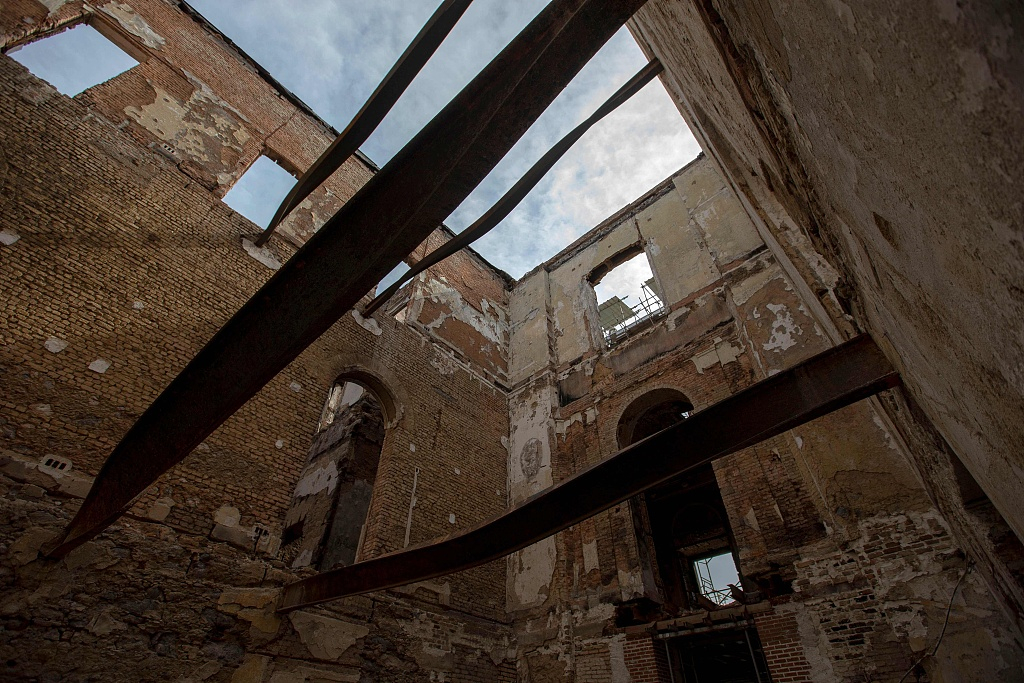

Drone view of Rio de Janeiro's treasured National Museum, one of Brazil's oldest, a day after a massive fire, September 3, 2018. /VCG Photo
The massive fire that destroyed Brazil’s National Museum one year ago has been repeatedly called a tragedy that could have been avoided. Housing 20 million artifacts, it was one of the most important natural history and anthropological museums in the Americas. Years of financial neglect left the building at risk. Although the losses were hard to calculate, a significant number of treasures are being recovered.
On the night of September 2, 2018, an inferno that lasted for hours consumed some of the world's most precious artifacts inside Brazil's iconic National Museum. Officials blamed the fire on a short circuit in the air-conditioning system, a lack of sprinklers and the nearby hydrants that were dry. Many wondered why there was a systemic lack of funding and neglect.
“We had just signed on June fifth the contract that would give roughly four million dollars to our institution. And this is the irony of it all. Now the money arrived after decades of no resources for this kind of investment, it arrives in the same year the museum completes 200 years and then the tragedy happens,” recalls Alexander Kellner, the curator.
Part of that money has been used to cover the roof of what was once a palace that served as residence of the Portuguese Royal Family in Rio de Janeiro and was then converted into Brazil’s National Museum.
If the building itself held historical importance, much of the collection that was lost was priceless: bones of Brazilian dinosaurs, Egyptian artifacts and millions of insects, among other treasures disappeared in smoke.

An interior view of the National Museum, taken by a journalist during his visit, February 12, 2019. /VCG Photo
The devastating fire severely damaged the main building and most of its collection was reduced to ashes. But since the tragedy, staff are recovering more than expected. Thousands of items have been rescued from the rubble and there are hopes that with the help of the international community the museum can be brought back to life.
Paleontologist Luciana Carvalho, vice coordinator of the rescue team, said the museum will one day reopen: “It is obvious we suffered a huge loss, and we need help. For example, the mummies even if we recover the bones is not enough to recover data, but on the other hand, there is the survival of ceramics, rocks, minerals and fossils. It will take some time for us to open it to the public, but we will.”
The only artifact left on the main floor was a meteorite, weighing more than five tons, the largest ever found in Brazil. Also, among the recovered items, there are parts of “Luzia,” the 12,000-year-old remains of a human skull considered the centerpiece of the museum’s collection.
Meanwhile, dozens of the museum’s staff are cleaning the soot and the dust-off fragments that have been found. It is a delicate job says archeologist Cleide Martins: “Here in the lab, we are still not in the phase of restoring these objects. It is a first preventive conservation effort to save and avoid losing parts of the material.”
Containers are packed with recovered items. It could take years to finish classifying all the material. Replacing the collection will be impossible without the help of other museums.
"We will not be able to rebuild the National Museum without their help because our museum not only housed material from Brazil, we had material from all over the world and at this point what we would like is that institutions from all places, including China consider, when we are ready, then that they would make donations of original material,” said Kellner.
From the rubble and despair comes hope as more items are recovered and restored. Optimistic officials said the museum is alive and the research continues.

Copyright © 2018 CGTN. Beijing ICP prepared NO.16065310-3
Copyright © 2018 CGTN. Beijing ICP prepared NO.16065310-3